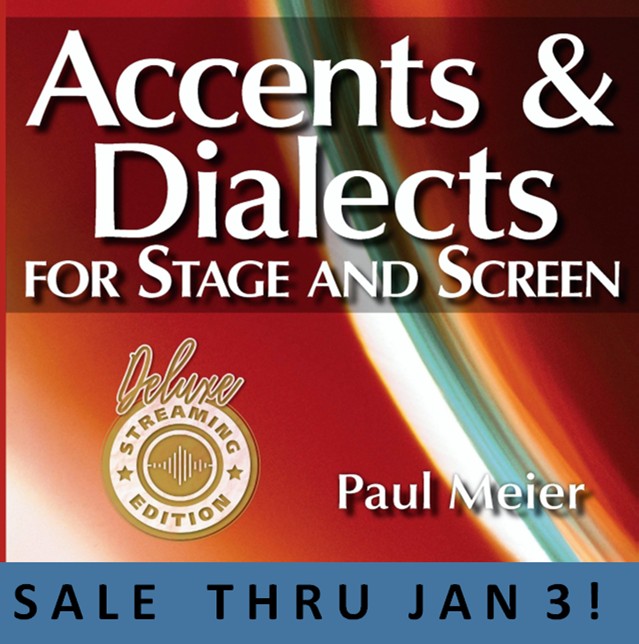Oklahoma 10
Listen to Oklahoma 10, a 52-year-old woman from Shawnee and Oklahoma City, Oklahoma, United States. Click or tap the triangle-shaped play button to hear the subject.
Both as a courtesy and to comply with copyright law, please remember to credit IDEA for direct or indirect use of samples. IDEA is a free resource; please consider supporting us.
BIOGRAPHICAL INFORMATION
AGE: 52
DATE OF BIRTH (DD/MM/YYYY): 1956
PLACE OF BIRTH: Shawnee, Oklahoma
GENDER: female
ETHNICITY: Caucasian
OCCUPATION: creative designer
EDUCATION: high school diploma
AREA(S) OF RESIDENCE OUTSIDE REPRESENTATIVE REGION FOR LONGER THAN SIX MONTHS:
The subject has lived in Key West, Florida; and Santa Fe, New Mexico.
OTHER INFLUENCES ON SPEECH:
The subject designs Western/Cowboy/Outlaw-inspired jewelry, clothing, and accessories at a gallery in the Paseo District of Oklahoma City. Also, she was close to a grandmother who was born and raised in Kentucky.
The text used in our recordings of scripted speech can be found by clicking here.
RECORDED BY: Ben Corbett
DATE OF RECORDING (DD/MM/YYYY): 20/06/2009
PHONETIC TRANSCRIPTION OF SCRIPTED SPEECH: N/A
TRANSCRIBED BY: N/A
DATE OF TRANSCRIPTION (DD/MM/YYYY): N/A
ORTHOGRAPHIC TRANSCRIPTION OF UNSCRIPTED SPEECH:
[Hammering sound is from leather construction in other room.] I t-take a blank belt buckle that I order offline, and I spray paint it black. And then, but before I do that, I collect from flea markets and garage sales and stuff, uh, used, broken, vintage, uh, jewelry. And I … after I paint them up, I glue all the jewelry on the, uh, buckle. And then I just glue the pieces on the buckle. And then I also add James’ little dead Okies on the buckle. And then he pours a mixture on top, and then I take them, and I sell them for a lot of money. And then I take, uh, cut up old cowboy belts and James puts a snap on them and then I take, uh, paints and I paint the tooling. And these are vintage. They’re really old, and when I paint them, it just brings out a really cool fullness to the tooling. And, er, so whoever wears them, uh, was wearing the spirit of an old cowgirl, cowboy. And then it’s got my spirit in them. So, we call it the Bone Dust, Bone Dust, Oklahoma. [Subject reads from an original poem about Bone Dust, Oklahoma.] Where in the world is Bone Dust, Oklahoma? Don’t bother pulling out the official state map of Oklahoma to find Bone Dust. There is no zip code and no state highway cutting a path through it. Bone Dust is not a place. It is a state of mind. Go deep within yourself, deeper than your gut to the very core of who you are. Along the way, you’ll see the heartaches and trials, pains, and suffering. Upon, uh, arrival at your destination, you will find strength and second chances. Not everyone will go to Bone Dust, but that’s just as well because it’s not for the faint of heart. The rewards for your journey are unique, edgy, and gut-inspired, a true likeness of the one who first discovered this mysterious place: the Bone Dust Cowgirl.TRANSCRIBED BY: Ben Corbett
DATE OF TRANSCRIPTION (DD/MM/YYYY): 20/06/2009
PHONETIC TRANSCRIPTION OF UNSCRIPTED SPEECH: N/A
TRANSCRIBED BY: N/A
DATE OF TRANSCRIPTION (DD/MM/YYYY): N/A
SCHOLARLY COMMENTARY:
Medial “r” can eclipse a following syllable that ends with “r” consonant (mirror). Ending “d” and “t” often drops. Beginning plosive consonants, such as “d” and “g,” are very strong, muscled. Medial “t” drops (vintage). “ʃ” inserts into the consonant blend “str,” forming “shtr.” The “g” on -ing endings is dropped. “u” vowel (zoo) lengthens and is preceded by a schwa, “ə.” “u” is also nasal. Notice the “æ” sound in nasal as well. Short vowels “ɪ” (kit) and “ɛ” (get) lengthen and receive additional stress. The diphthong “eɪ” (paint) becomes the diphthong “aɪ.” The diphthong “aɪ” (time) becomes the “ɑ” sound (father). Finally, the diphthong “oʊ” (don’t) lengthens and approaches the diphthong “aʊ.”
COMMENTARY BY: Ben Corbett
DATE OF COMMENTARY (DD/MM/YYYY): 20/06/2009
The archive provides:
- Recordings of accent/dialect speakers from the region you select.
- Text of the speakers’ biographical details.
- Scholarly commentary and analysis in some cases.
- In most cases, an orthographic transcription of the speakers’ unscripted speech. In a small number of cases, you will also find a narrow phonetic transcription of the sample (see Phonetic Transcriptions for a complete list). The recordings average four minutes in length and feature both the reading of one of two standard passages, and some unscripted speech. The two passages are Comma Gets a Cure (currently our standard passage) and The Rainbow Passage (used in our earliest recordings).
For instructional materials or coaching in the accents and dialects represented here, please go to Other Dialect Services.
 IDEA: International Dialects of English Archive
IDEA: International Dialects of English Archive




